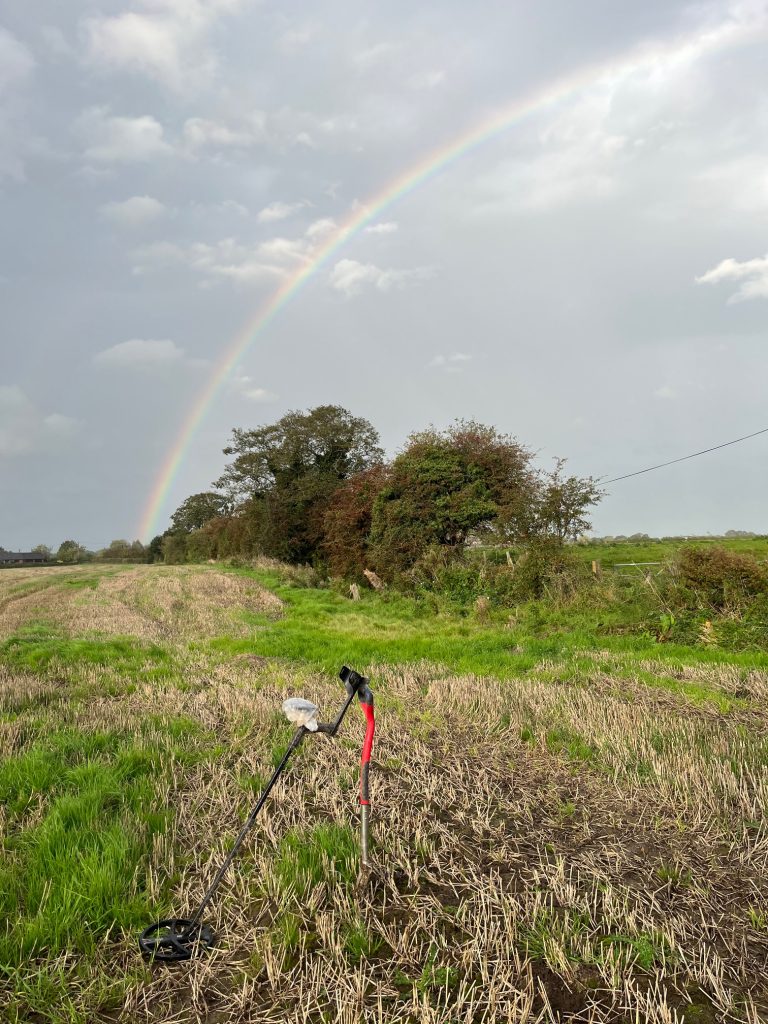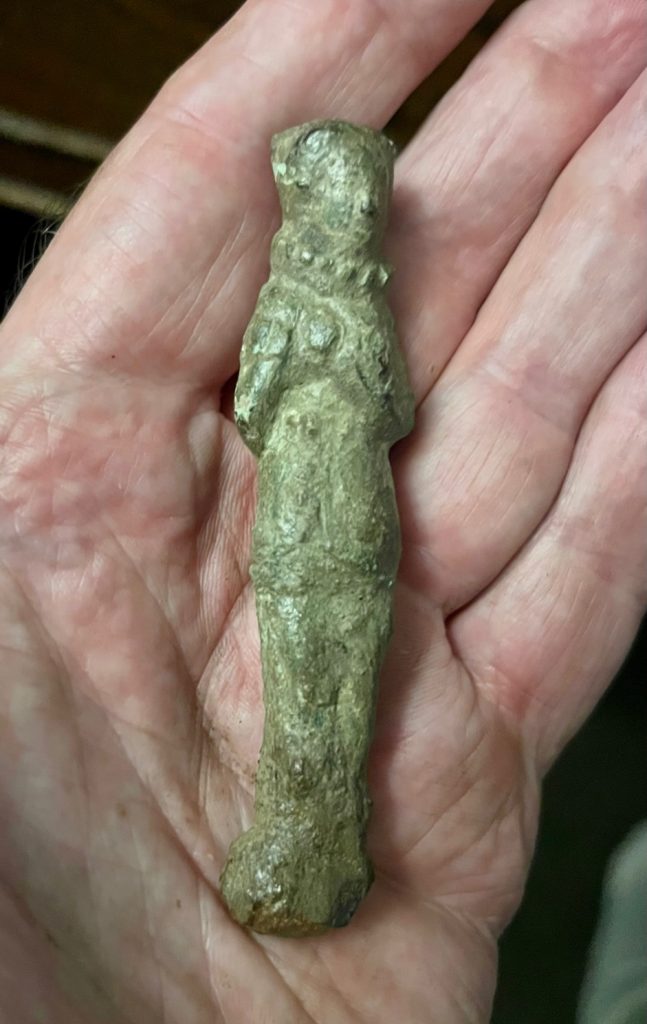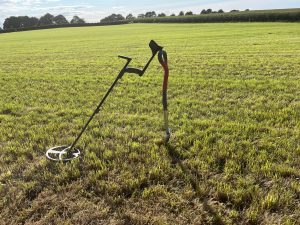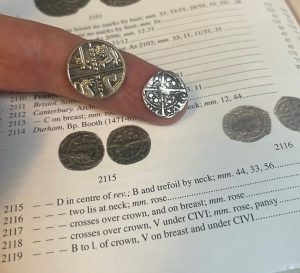
About a year ago I was on my favourite permission metal detecting on a field that was only revealing scrap metal and pieces of lead other than a 1914 penny and a 1940’s shilling. Now a silver coin is good at any time, but this was only 50% silver so still okay, but not quite amazing. So me and Bob decided to head over to a large meadow closer to the main centre of occupancy on this medieval site. To get there we had to cross a field that we had never detected on, but it had recently been sown with wheat (or maybe barley… I can’t quite remember) so I said to Bob, to not detect on it because I didn’t want us to disturb the crop. Bob agreed and we just crossed to the gate into the large 26 acre meadow and detected on there.
Fast forward now to this year, finally the crop has been harvested, but it has been left as quite tall stubble and in a few weeks it is going to be ploughed, rolled and sown again. So I have a very limited window to get on and to battle the fresh stubble before it is off limits again.

I had maybe just two days to give it a go, so headed on down there. The ground was very wet and the high fresh stubble made it hard work to detect on it, but I hopped over the gate and set my detector up and headed off. I took a whole 3 minutes to find my first digable signal.
It was clear and steady, but not that loud, maybe a decent signal but quite deep?, the numbers on the display were steady too, so it was the first reasonably good signal, and only a few minutes in. It was stubble so not really a plug to dig out, so I dug my spade in and turned the soil over and out, then again, knowing that the target wasn’t right under the spade. I dug a hole about 8 inches deep, but my detector said that the target was still in the hole.
I was on my knees by now, using my hand tool to dig down, using my pinpointer to guide me. The signal was deep, was it just going to be a lump of iron? Using my fingers I dug down further, then felt something hard and kind of round and gently loosened it and prised it out.
As soon as I saw it, I knew what it was, it was unmistakable, it was a completely intact crotal bell, of course it was caked in mud and packed full of soil. I photographed it and placed it in my jacket pocket for safekeeping as it was too big to fit in my coin pod. I decided that there wasn’t any point in trying to clean it any further out in the field so happy that my first find had been something fairly decent I continued with my detecting.
I knew at this point that I was very unlikely to find anything better for the rest of the day, but I was here now, and who knows, so carried on detecting. There were a few more diggable signals, one being a button and another being a lead bag seal, there were of course the usual unidentifiable scraps of lead and random small pieces of copper but nothing more of interest, not even a scrappy toasted copper coin.
Eventually I decided that I had, had enough and to detect my way over to the gate into the farmyard where I had parked my car. On the way I had another fairly decent signal and of course began to dig it out. I found it fairly quickly because it was a decent size, probably a little bigger than my finger.It was a figure of some sort, like a small statuette.with its arms to the front, but other than that I had no idea what it was. I soon reached the gate and climbed over then set off home.
Once back I was able to take a closer look at my finds. First I cleaned off the crotal bell, the mud had now dried and brushed off quite easily. It was a bit more of a job to get the packed earth out from the inside. Crotal bells have a couple of small holes in their sides which allow the ringing to be heard more easily. Using a cocktail stick I was able to tease most of this out by gently poking through the holes and shaking it out. Once the metal pea thing inside was free I used this to clean out the rest of the soil by gently shaking it. The movement of the pea soon cleaned out the last of the soil and I now had an intact ‘ringer’.

What is a crotal bell?
Crotal bells are also known as rumbler bells or rattle bells. They really do rattle more than ring. They were used on horses and horse drawn vehicles as a way to make themselves heard as they meandered their way along the lanes in times gone by. They were used in Roman times but most ones that are found in England are medieval or post medieval as they were in use right up to the 1800’s, Medieval ones were often decorated and marked with the initials of the maker, later ones were plainer. The one that I have found here probably dates to the 16th or 17th Century which fits in with other items found on this permission.
Now what about the statue thing? Well I cleaned this up to reveal a figure, most probably female wearing a high ‘ruff’ style collar. It has since been identified as a cutlery handle dating back to the 15th century, so getting on for 600 years old, so another interesting find.
Here is a very similar item on the Portable Antiquities Scheme (PAS) database https://finds.org.uk/database/artefacts/record/id/1112825



If you like my content and want to see more, why not subscribe using the subscribe option at the bottom of the page. It doesn’t cost you anything, it just means that I can email you to let you know when I publish a new post or article. Thanks




